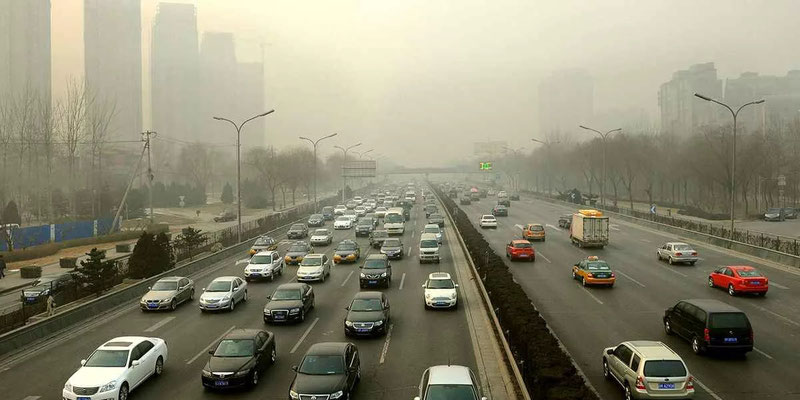Today, the accumulation of dust particles in the air due to climate change is not only occurring in Tashkent but also in the Central Asian region and many countries around the world. The director of the laboratory at the Hydrometeorological Research Institute, climate expert Erkin Abdullakhatov, shared his opinions and recommendations on this matter, as reported by the Ministry of Ecology.
According to the expert, the process of desertification continues in many countries located in the central part of the Earth, from the northern part of Africa to China, and this is leading to an increase in dust particles in the air
PM2.5 — a mixture formed from solid particles in the air or such particles combined with water vapor, with a diameter of up to 2.5 micrometers (30 times smaller than a hair strand). PM stands for "Particulate Matter," signifying "particle substances." 2.5 is the measurement size in micrometers. Other small particles also pollute the air, and particles such as PM1, PM10, and PM100 are studied in observational and scientific research based on their size.
According to E. Abdullakhatov, standards are developed based on the World Health Organization's recommended standard, which is 5 µg/m(3) annually and 15 µg/m(3) daily. These indicators are not reflected in any country's national standards because the "Air Quality Index" platform is not considered a sufficient platform for making decisions and recommendations, only scientific research institutes have their national standards, and comparing them to form ratings is difficult due to the 5 µg/m(3) value being a convenient measure for forming city rankings based on information recommended by the World Health Organization.
In 2024, experts from the Ministry of Ecology, the Hydrometeorology Agency, and the Sanitary-Epidemiological Committee developed national standards for Uzbekistan based on in-depth research. According to these standards, the norm for air pollution is set at 35 µg/m(3) annually and 60 µg/m(3) daily.
"For comparison, no country in the world has a standard equal to that of the WHO. Even countries of the European Union have developed their national standards. In 2023–2024, the Ministry of Ecology and the Tashkent city administration developed the 'Air Monitoring Tashkent' platform based on our national standards. This platform updates data by areas within Tashkent city every hour and is considered a reliable source," — says the climate expert.
According to the expert, there is a concept called "wind rose" in air pollution, which means that wind plays an essential role in atmospheric pollution. In coastal countries, due to the high wind flow throughout the year, dust particles do not remain suspended in the air. In Tashkent, between 1950–1980, the wind entered from the northeast and circulated in the city, creating a "wind rose". However, from 1990-2020, the "wind rose" changed, meaning the entry of wind flow and wind movement decreased, turning Tashkent into an area where dust particles remain suspended in the air.
"In Tashkent, during the last century, the wind speed was equal to 1.7 meters/second, while from 1981–2010, it was 1.4 meters/second. In the last five years, it has dropped to 1.3 meters/second. The city being surrounded by mountains also hinders wind movement. Additionally, the indiscriminate construction of tall buildings in the capital is also obstructing wind movement. This is leading to the suspension of dust particles in the air and an increase in the level of air pollution in the capital," — says E. Abdullakhatov.
When we talk about greenery, we usually mean trees. But in reality, greenery also includes lawns and mixed shrubs.
"Compared to 2016, construction areas have doubled by 2023, resulting in a twofold decrease in green spaces. This means that green lawns have sharply decreased compared to trees," — says the expert.
Erkin Abdullakhatov also specifically addressed the concept of "heat islands."
"Since 2016, a sharp increase in temperature has been observed in Tashkent. Naturally, this is causing areas with a lot of construction and reduced greenery levels to maintain higher temperatures. This is leading to the concept of 'heat islands' in Tashkent," — said the expert.
The climate expert emphasized that harmful emissions from automobiles as well as heavy and light industrial enterprises are also negatively impacting the atmosphere of Tashkent city.






